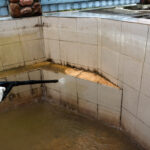In the intricate dance of engineering that enables the miracle of flight, every little detail matters. Aircraft, those majestic feats of human ingenuity, are the result of a myriad of interconnected systems working seamlessly. One such unsung hero in this symphony of technology is the vacuum sensor. In this article, we delve into the captivating world of vacuum sensors, uncovering their inner workings and exploring their multifaceted roles beyond the clouds.
Unraveling the Enigma: How Vacuum Sensors Work
Vacuum sensors, unobtrusive yet indispensable, are the unsung conductors of aeronautical harmony. These sensors, equipped with remarkable sensitivity, monitor the pressure differences between the interior and exterior of an aircraft. Their functioning might seem like a blend of wizardry and science fiction, but it all comes down to their keen ability to detect even the slightest changes in pressure. Whether it’s gauging cabin pressure for passenger comfort, assisting in altimeter readings, or aiding flight control systems, these sensors are the sentinels that help pilots conquer the skies with confidence.
Aiding Flight Control: The Powerhouse Role of Vacuum Sensors in Aircraft
Ever wondered how a plane manages to maintain its course amid the boundless expanse of the sky? Enter vacuum sensors, the silent navigators that collaborate with the aircraft’s autopilot systems. These sensors provide crucial data to the flight control systems, ensuring the plane stays on track, even in the most turbulent conditions. By continuously monitoring pressure variations, they assist in determining the aircraft’s altitude, pitch, and roll angles, facilitating a smooth and stable flight experience. Thanks to vacuum sensors, pilots can focus on broader strategies while these unsung heroes handle the finer nuances of flight.
Beyond the Blue Yonder: Expanding Horizons
While their contributions to flight safety are paramount, vacuum sensors also shine in other realms. These versatile instruments have found homes in a range of applications that extend far beyond aviation. From medical equipment to industrial machinery, and from meteorological stations to scientific research, vacuum sensors play pivotal roles in precision measurement and data acquisition. Their exceptional sensitivity and reliability make them invaluable tools in fields where accuracy and efficiency are the order of the day.
Innovation Unleashed: The Future of Sensor Technology
As technology continues to advance at a breathtaking pace, vacuum sensors are also evolving to meet the demands of the modern world. Miniaturization, enhanced sensitivity, and integration with smart systems are the buzzwords that shape the future of these unassuming devices. Imagine aircraft that can adjust their flight paths with unprecedented precision, or medical equipment that can diagnose with unrivaled accuracy. The possibilities are as boundless as the skies themselves. The journey of vacuum sensors is far from over; it’s a narrative that’s still being written, with each chapter unveiling new dimensions of their potential.
The synergy of countless components
In conclusion, the world of aviation thrives on the synergy of countless components, and vacuum sensors emerge as the silent yet significant players in this grand orchestra. Their unerring ability to sense pressure variations empowers aircraft to navigate the skies with grace and precision. But their influence doesn’t stop there. These remarkable sensors extend their reach across industries, revolutionizing the way we perceive measurement and control. As technology advances, we can only wait with bated breath to witness the next chapters in the ever-evolving saga of vacuum sensor innovation. So the next time you board a flight or marvel at the intricacies of aeronautics, spare a thought for the unsung heroes that enable these feats – the remarkable vacuum sensors.

